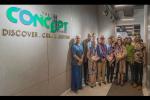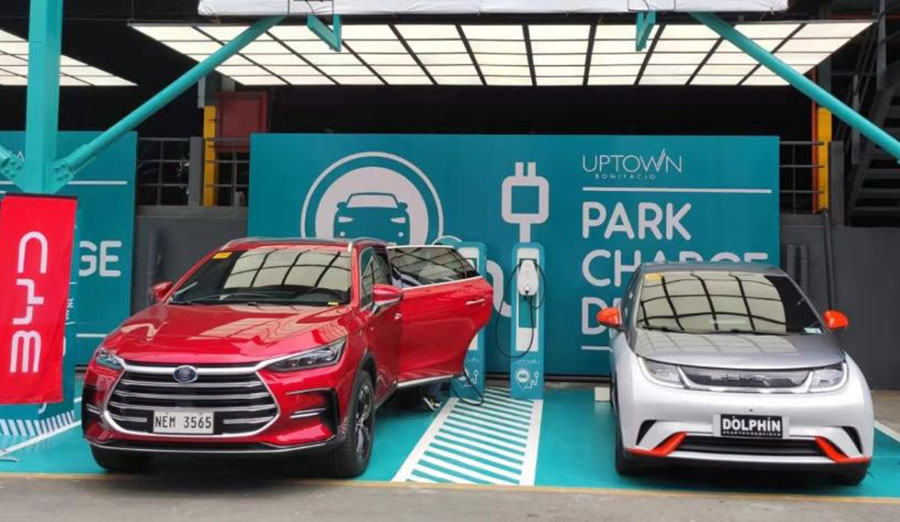New Energy Vehicles (NEVs), a category encompassing electric vehicles (EVs), plug-in hybrid electric vehicles (PHEVs) and other alternative options, are emerging as the vanguard of sustainable living.
These automobiles herald a future where clean energy and technological innovation converge to create a healthier planet and more livable cities.
The Environmental Vanguard : Reducing Emissions and Fuel Dependence
At the heart of the movement is a commitment to diminishing our environmental footprint.
NEVs offer a clear path to reducing greenhouse gas emissions, a crucial step in combatting climate change.
This direct reduction in pollutants like nitrogen oxides and particulate matter translates to cleaner air.
For instance, a study by the California Air Resources Board found that a shift to NEVs could reduce smog-forming emissions from cars and trucks by up to 80% by 2030.
Moreover, these vehicles are key players in the global effort to reduce dependence on fossil fuels.
By harnessing electricity, especially if generated from renewable sources like solar and wind power, they pave the way for a more sustainable energy landscape.
China, the world's largest car market, is a prime example.
The country has invested heavily in renewable energy and NEV infrastructure, achieving a NEV penetration of 45% by March 2024.
Additionally, in Europe, countries like Norway have set ambitious targets, aiming for all new cars sold to be zero-emission by 2025.
Meanwhile, Germany, a leader in the automotive industry, has set a target of 7 millioin electric vehicles on the road by 2030, while the UK aims for all new cars to be zero-emission by 2035.
Urban Renewal : Breathing Life into Cities
The adoption of NEVs brings tangible benefits to urban environments.
One of the most immediate impacts is the improvement in air quality.
Cities that embrace EV, like Shenzhen, China, which boasts a large fleet of electric taxis, witness a marked decrease in air pollution, leading to healthier communities and a reduction in pollution-related diseases.
Furthermore, NEVs contribute to a quieter urban atmosphere.
The absence of engine noise reduces sound pollution, creating more serene cityscapes and enhancing the quality of life for residents.
In major cities around the world, electric buses are playing an increasingly important role.
Innovation and the Road Ahead
The NEV industry is at the forefront of automotive innovation, driven by the quest for efficiency, safety, and sustainability. Advancements like Lithium Iron-Phosphate Batteries used by various manufacturers represent significant progress.
However, the industry's commitment to innovation goes beyond any single technology.
A prime example of this forward-thinking approach is BYD, a global giant not just in New Energy Vehicles, but also in shaping a sustainable transportation ecosystem.
BYD's vision extends beyond the car itself.
They are leaders in renewable energy generation, with a focus on solar photovoltaic technology, battery energy storage station, new energy vehicles, and rail transit, etc.
This commitment is evident in their large-scale production of solar panels. But BYD doesn't stop there.
They've also developed best-in-class energy storage solutions with their high-safety battery systems.
This allows them to store the clean energy generated by solar power and use it to charge their NEVs, creating a truly closed-loop sustainable transportation system.
The NEV category encompasses a wider range of technologies than just electric vehicles.
While EVs and plug-in hybrid electric vehicles (PHEVs) represent a significant portion of the market, other alternative fuel options are also making significant strides.
Hydrogen fuel cell vehicles (FCVs) are gaining traction, offering extended range and rapid refueling times similar to gasoline vehicles.
However, challenges related to hydrogen infrastructure development persist.
A Greener Future on the Horizon
As we stand on the brink of a new era in transportation, the rise of NEVs is more than a technological revolution; it's a societal transformation.
Embracing NEVs is not just about choosing a cleaner mode of transportation; it's about reimagining our relationship with the environment and taking active steps towards a sustainable future.
The journey towards widespread NEV adoption is paved with challenges, from developing robust infrastructure for various fuel types to ensuring the sustainability of energy sources.
Yet, the collective efforts of governments, industries, and individuals around the globe, signify a powerful commitment to overcoming these obstacles.
In the grand tapestry of efforts to combat climate change and promote sustainable living, NEVs shine as beacons of hope.
As we continue to innovate and adapt, the vision of a greener, cleaner world becomes not just a possibility, but an inevitable destination.
Together, let's drive towards a future where every journey contributes to the health of our planet, making the NEV revolution not just about transportation, but about building a more sustainable world for generations to come.
























